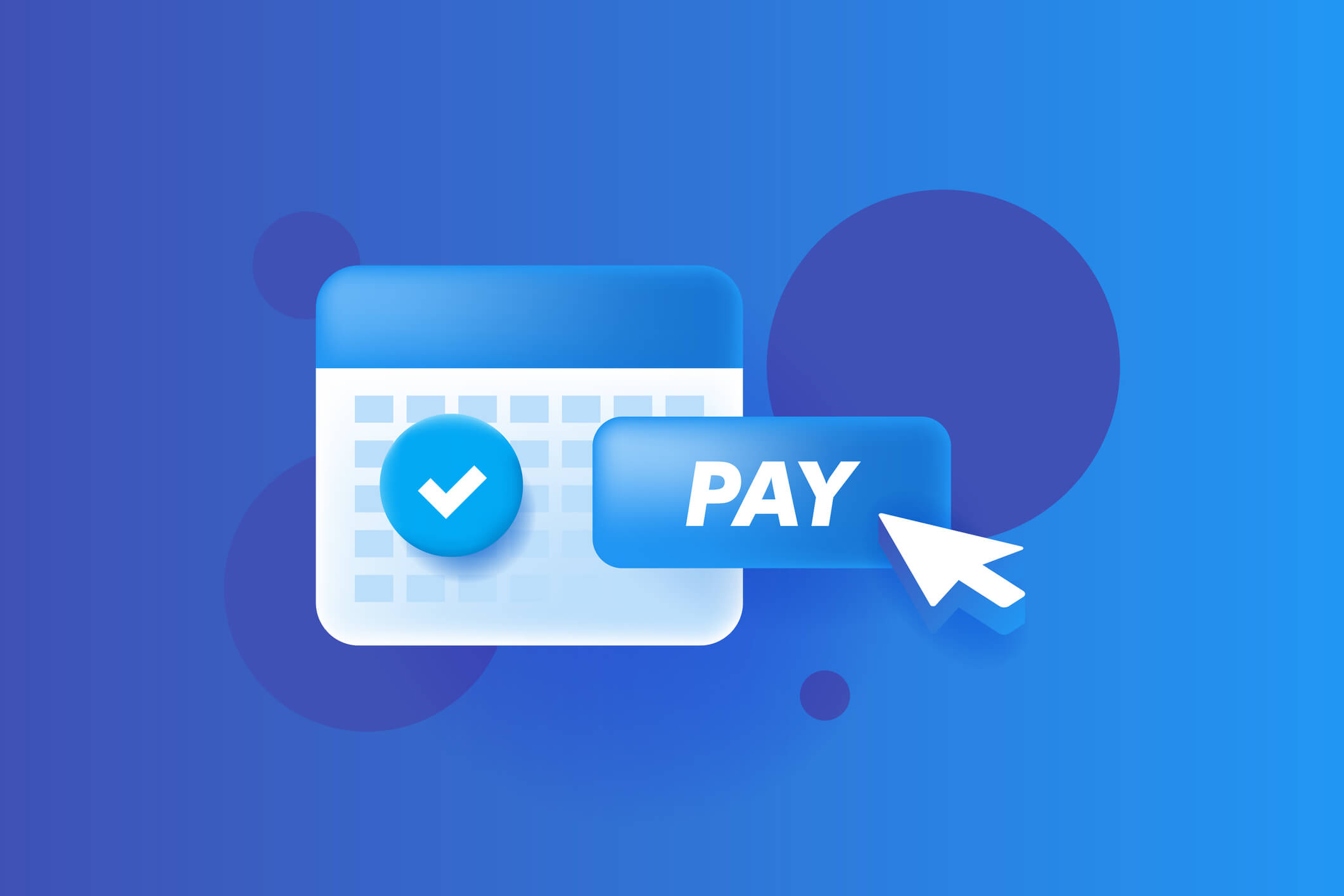Automating Recurring Payments with Cloud Solutions
In today’s fast-paced business environment, automation has become a key driver of efficiency and productivity. One area where automation is particularly beneficial is in recurring payments. Recurring payments are transactions that occur on a regular basis, such as monthly subscriptions or installment payments. Automating these payments can save businesses time, reduce errors, and improve cash flow. With the advent of cloud technology, automating recurring payments has become even easier and more accessible for businesses of all sizes.
Understanding the Basics: What are Recurring Payments and Why Automate Them?

Recurring payments are a fundamental part of many businesses, from subscription-based services to installment plans for large purchases. These payments occur on a regular basis, often monthly or annually, and can be a significant administrative burden for businesses to manage manually. Automating recurring payments involves setting up a system that automatically processes these payments, eliminating the need for manual intervention.
There are several reasons why businesses should consider automating recurring payments. Firstly, it saves time and reduces the risk of errors. Manually processing recurring payments can be time-consuming and prone to mistakes, such as missed payments or incorrect amounts. By automating the process, businesses can ensure that payments are processed accurately and on time, freeing up valuable resources to focus on other tasks.
Secondly, automating recurring payments improves cash flow. By automating the collection of payments, businesses can ensure a steady stream of revenue, reducing the risk of late or missed payments. This can be particularly beneficial for businesses with a subscription-based model, where a predictable cash flow is essential for growth and stability.
Exploring Cloud Solutions: How Cloud Technology is Revolutionizing Recurring Payments
Cloud technology has revolutionized the way businesses operate, and recurring payments are no exception. Cloud solutions offer a range of benefits for businesses looking to automate their recurring payment processes. Firstly, cloud solutions are highly scalable, making them suitable for businesses of all sizes. Whether you are a small startup or a large enterprise, cloud solutions can be tailored to meet your specific needs.
Cloud solutions also offer flexibility and accessibility. With cloud-based recurring payment systems, businesses can access their payment data from anywhere, at any time. This is particularly beneficial for businesses with remote teams or multiple locations, as it allows for seamless collaboration and real-time visibility into payment processes.
Furthermore, cloud solutions offer enhanced security and data protection. Cloud providers invest heavily in security measures to protect their customers’ data, often employing advanced encryption techniques and regular security audits. This can provide businesses with peace of mind, knowing that their payment data is secure and compliant with industry regulations.
Benefits of Automating Recurring Payments with Cloud Solutions

Automating recurring payments with cloud solutions offers a range of benefits for businesses. Firstly, it improves efficiency and reduces administrative burden. By automating the payment process, businesses can save time and resources that would otherwise be spent on manual tasks such as data entry and reconciliation. This allows employees to focus on more strategic and value-added activities, ultimately driving business growth.
Secondly, automating recurring payments improves accuracy and reduces the risk of errors. Manual processing of payments is prone to human error, such as entering incorrect payment amounts or missing payment deadlines. By automating the process, businesses can ensure that payments are processed accurately and on time, reducing the risk of customer dissatisfaction and potential financial losses.
Furthermore, automating recurring payments improves cash flow and reduces the risk of late or missed payments. With automated payment systems, businesses can set up reminders and notifications to ensure that customers are aware of upcoming payments and have sufficient funds available. This can help businesses maintain a steady stream of revenue and avoid the negative impact of late or missed payments on their cash flow.
Choosing the Right Cloud Solution for Your Business: Factors to Consider
When choosing a cloud solution for automating recurring payments, there are several factors that businesses should consider. Firstly, it is important to assess the scalability and flexibility of the solution. Businesses should choose a solution that can grow with their needs and adapt to changing requirements. This is particularly important for businesses that anticipate rapid growth or have fluctuating payment volumes.
Secondly, businesses should consider the integration capabilities of the cloud solution. It is important to choose a solution that can seamlessly integrate with existing systems, such as accounting software or customer relationship management (CRM) systems. This ensures that payment data is synchronized across different platforms, reducing the risk of data discrepancies and improving overall efficiency.
Additionally, businesses should evaluate the security measures and compliance standards of the cloud solution. It is crucial to choose a solution that meets industry regulations and provides robust data protection. This includes features such as encryption, access controls, and regular security audits. Businesses should also consider the reputation and track record of the cloud provider, ensuring that they have a proven track record of delivering secure and reliable services.
Implementing Cloud-based Recurring Payment Systems: Step-by-Step Guide
Implementing a cloud-based recurring payment system involves several steps. Firstly, businesses should assess their current payment processes and identify areas for improvement. This includes evaluating the efficiency, accuracy, and security of existing processes, as well as identifying any pain points or bottlenecks.
Once the areas for improvement have been identified, businesses can start researching and evaluating different cloud solutions. This involves considering factors such as scalability, flexibility, integration capabilities, and security measures. Businesses should also consider the cost and return on investment (ROI) of implementing the solution, ensuring that it aligns with their budget and business objectives.
Once a cloud solution has been selected, businesses can start the implementation process. This involves setting up the necessary infrastructure, such as servers and databases, and configuring the system to meet the specific needs of the business. This may include setting up payment schedules, defining payment amounts, and configuring notifications and reminders.
During the implementation process, businesses should also consider training and support for employees. It is important to ensure that employees are familiar with the new system and understand how to use it effectively. This may involve providing training sessions, creating user guides, or offering ongoing support through a dedicated helpdesk or support team.
Overcoming Challenges: Common Issues and Solutions in Automating Recurring Payments
While automating recurring payments with cloud solutions offers numerous benefits, there can be challenges along the way. One common challenge is the integration of the cloud solution with existing systems. Businesses may face difficulties in synchronizing payment data across different platforms, resulting in data discrepancies and inefficiencies. To overcome this challenge, businesses should choose a cloud solution that offers seamless integration capabilities and work closely with their IT team or external consultants to ensure a smooth integration process.
Another challenge is ensuring the accuracy and reliability of payment data. Errors in payment amounts or missed payment deadlines can have a significant impact on customer satisfaction and business reputation. To address this challenge, businesses should implement robust validation and verification processes within their cloud-based recurring payment system. This may include automated checks for payment amounts, validation of customer information, and real-time notifications for failed or declined payments.
Ensuring Security and Compliance: Best Practices for Cloud-based Payment Automation
Security and compliance are critical considerations when automating recurring payments with cloud solutions. Businesses must ensure that their payment data is protected and compliant with industry regulations. To achieve this, businesses should follow best practices for cloud-based payment automation.
Firstly, businesses should choose a cloud provider that has a strong track record in security and compliance. This includes conducting thorough due diligence on the provider’s security measures, such as encryption, access controls, and regular security audits. Businesses should also ensure that the cloud provider complies with relevant industry regulations, such as the Payment Card Industry Data Security Standard (PCI DSS) for credit card transactions.
Secondly, businesses should implement strong access controls and user authentication mechanisms within their cloud-based recurring payment system. This includes using strong passwords, multi-factor authentication, and role-based access controls to ensure that only authorized personnel can access payment data.
Furthermore, businesses should regularly monitor and review their cloud-based recurring payment system for any security vulnerabilities or compliance issues. This may involve conducting regular security audits, penetration testing, and vulnerability assessments. Any identified issues should be promptly addressed to ensure the ongoing security and compliance of the system.
The Future of Recurring Payment Automation: Trends and Innovations in Cloud Technology
As cloud technology continues to evolve, so too will the capabilities and possibilities for automating recurring payments. Several trends and innovations are shaping the future of recurring payment automation.
One trend is the integration of artificial intelligence (AI) and machine learning (ML) technologies into cloud-based recurring payment systems. AI and ML can analyze payment data and customer behavior to identify patterns and trends, enabling businesses to personalize payment schedules and amounts. This can improve customer satisfaction and increase the likelihood of successful payments.
Another trend is the use of blockchain technology in cloud-based recurring payment systems. Blockchain offers enhanced security and transparency, making it an ideal solution for processing and recording recurring payments. By leveraging blockchain technology, businesses can ensure the integrity and immutability of payment data, reducing the risk of fraud and unauthorized access.
Furthermore, the rise of mobile payments and digital wallets is also shaping the future of recurring payment automation. With the increasing popularity of smartphones and mobile apps, businesses are exploring ways to leverage mobile payment technologies for recurring payments. This includes integrating mobile payment platforms into cloud-based recurring payment systems, allowing customers to make payments conveniently and securely from their mobile devices.
FAQ’s
Q.1: What are recurring payments?
Recurring payments are transactions that happen on a regular schedule, such as monthly subscriptions or annual fees. They are common in businesses that offer subscription services or allow payment in installments.
Q.2: Why should businesses automate recurring payments?
Automating recurring payments saves time, reduces human error, improves cash flow, and ensures payments are processed on time. This automation allows businesses to allocate resources to other value-added activities.
Q.3: How does cloud technology enhance recurring payment automation?
Cloud technology enhances recurring payment automation by offering scalability, flexibility, and security. It allows businesses to access payment systems from anywhere and integrates advanced security measures to protect payment data.
Q.4: What are the main benefits of automating recurring payments using cloud solutions?
The main benefits include increased efficiency, reduced administrative burden, improved accuracy, and better cash flow management. Automation also minimizes the risks of late or missed payments.
Q.5: What should businesses consider when choosing a cloud solution for recurring payments?
Businesses should consider the scalability, flexibility, integration capabilities, and security of the cloud solution. It’s also important to evaluate the provider’s compliance with industry regulations and their track record in delivering reliable services.
Q.6: How can a business implement a cloud-based recurring payment system?
Implementation involves assessing current payment processes, choosing a suitable cloud solution, setting up necessary infrastructure, and training employees on the new system. Ensuring smooth integration with existing systems is also crucial.
Q.7: What are common challenges in automating recurring payments and how can they be addressed?
Common challenges include integrating the new system with existing platforms and ensuring the accuracy and reliability of payment data. These can be addressed by selecting a cloud solution with robust integration capabilities and implementing stringent validation processes.
Q.8: What are best practices for ensuring security and compliance in cloud-based payment automation?
Best practices include selecting a reputable cloud provider with strong security measures, implementing robust access controls, and regularly monitoring the system for vulnerabilities. Compliance with industry standards like PCI DSS is also critical.
Conclusion
In conclusion, automating recurring payments with cloud solutions offers numerous benefits for businesses, including improved efficiency, accuracy, and cash flow. Cloud technology has revolutionized the way businesses operate, providing scalability, flexibility, and enhanced security for recurring payment processes. By choosing the right cloud solution, implementing best practices, and overcoming common challenges, businesses can successfully automate their recurring payment processes and drive growth. With the future trends and innovations in cloud technology, the possibilities for recurring payment automation are endless, promising even greater efficiency and convenience for businesses and customers alike.










